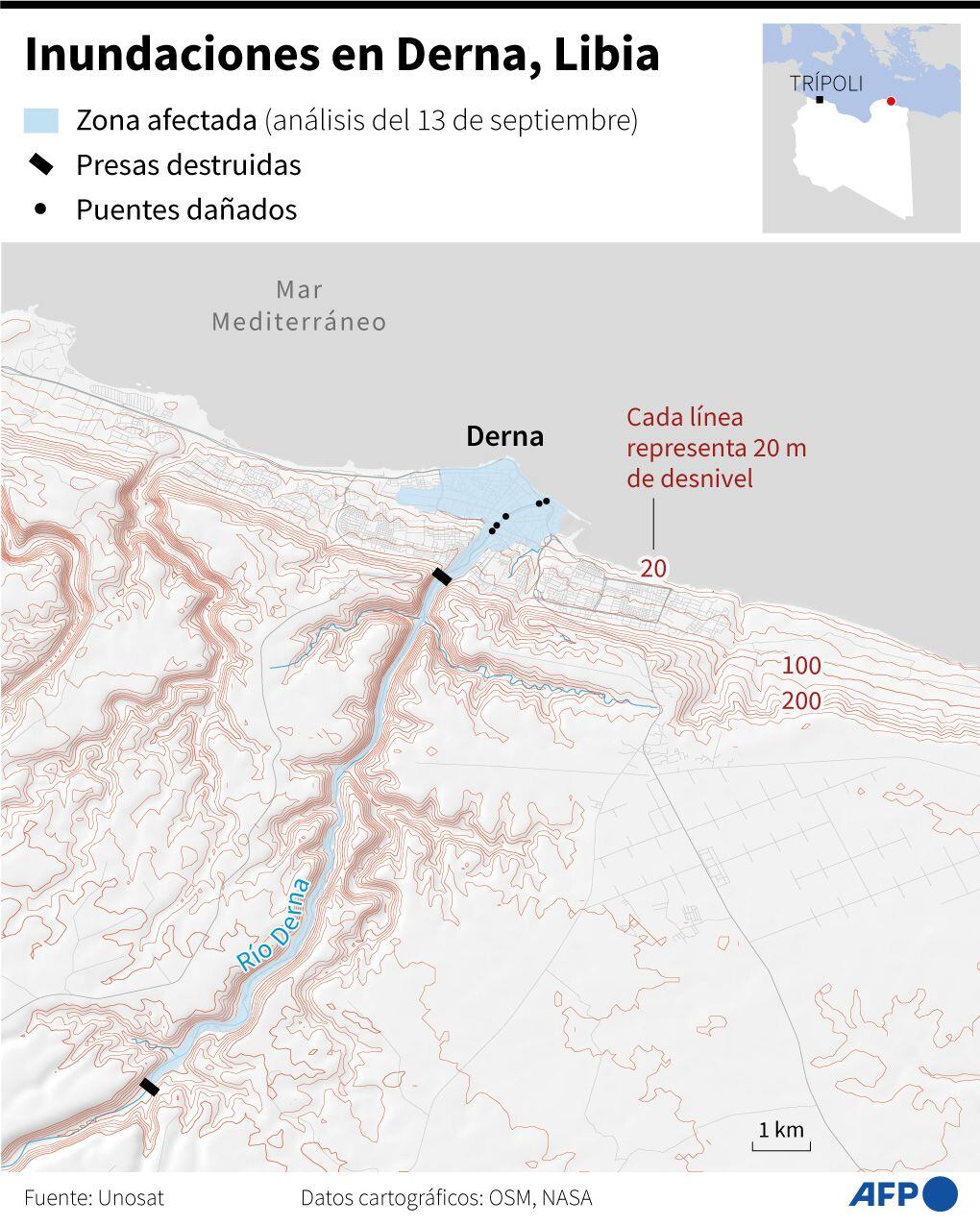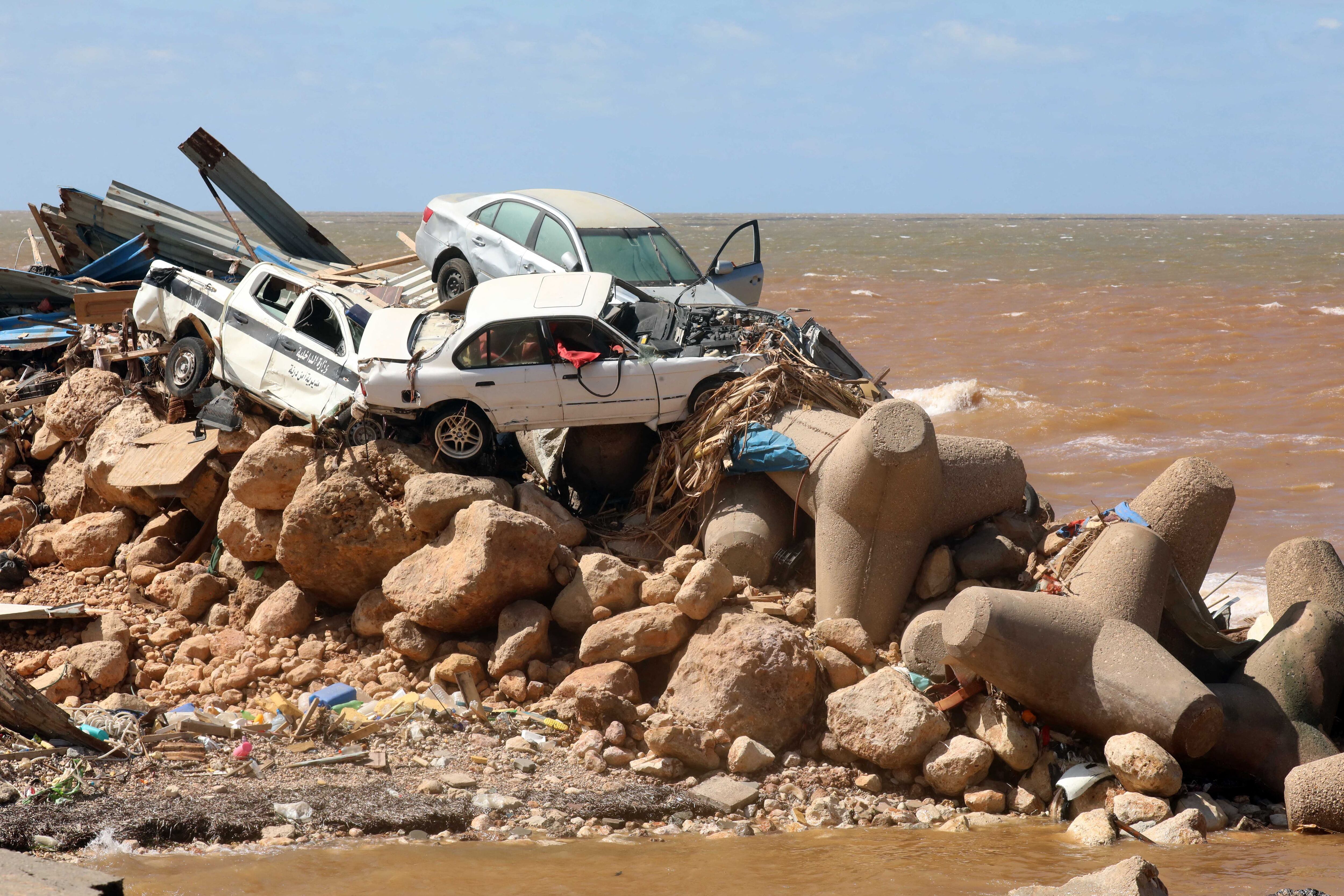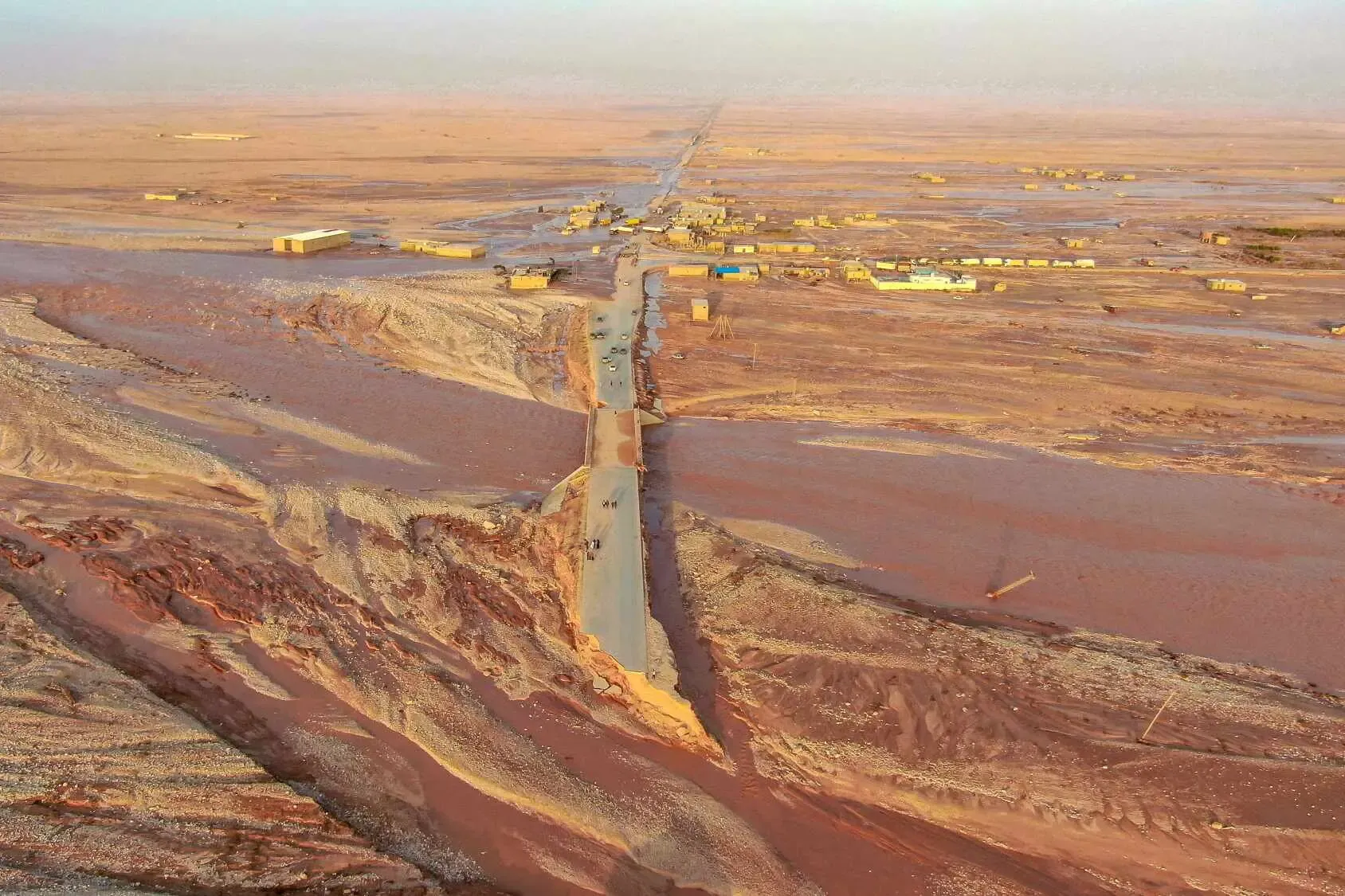On Sunday, the flood began in Libya. Then came the floods and total devastation. As of this Thursday, authorities reported at least 6,872 deaths and more than 10,000 missing. International aid organizations believe that the death toll will multiply when the final balance is made, as there are numerous isolated cities.
In the last days, The sea began to wash the bodies of people who were swept away by the current.in some impressive images that describe very well the magnitude of the tragedy.
LOOK: A DEA plane and a police dog: This was the cinematic capture of killer Danelo Cavalcante in Pennsylvania
The most affected is the city of Derna, which is burying thousands of people in mass graves, while rescue teams search the ruins for survivors or the deceased. Until before Sunday, this city had around 100 thousand inhabitants.

Images captured by satellites show the buildings of Derna destroyed by water and sand. While on the ground, cars are seen being dragged into mountains of rubble.

The morgues of Derna They are overcrowded and bodies have been left on sidewalks, Osama Aly, a spokesman for the Emergency and Ambulance Service, told CNN on Tuesday. Libya.
But what factors came together to cause this major tragedy? In this note we explain to you:
Before the tragedy in Libya, Storm Daniel hit Greece. In that European country, the equivalent of 18 months of precipitation rained in 24 hours, according to the World Meteorological Organization (WMO). There were at least 16 deaths and enormous damage to infrastructure due to the floods, but nothing compared to what would follow in the African nation.
Then Danilo advanced towards Libyawhere the storm developed the characteristics of a hurricane, a hybrid phenomenon with some characteristics of a tropical cyclone and others of a mid-latitude storm, a Mediterranean tropical cycloneexplains BBC Mundo.

According to the AP agency, When Storm Daniel made landfall in Derna on Sunday night, residents said they heard explosions as dikes outside the town collapsed.. A torrent that invaded the Wadi Derna, a valley that crosses the city, destroyed buildings and swept people into the sea.
The warm sea of Libya As a result of the climatic phenomena that hit the planet, the Storm Daniel.
“There is consistent evidence that the frequency of Mediterranean tropical cyclones decreases with climate warming, but those who are most powerful become even stronger”Suzanne Gray of the meteorology department at the University of Reading in Britain told Reuters.

“Although the role of climate change in intensification Storm DanielIt can be stated that the surface temperatures of the Mediterranean Sea have been considerably higher than average throughout the summer,” Karsten Haustein, a climatologist and meteorologist at the University of Leipzig in Germany, told Science Media Center.
A 2022 United Nations report noted that Libya is especially vulnerable to climate change and the increasingly intense storms that a warmer climate brings. Warming causes Mediterranean waters to expand and sea levels to rise, eroding coastlines and contributing to flooding, and the country’s low-lying coastal areas are particularly at risk.
So, when Danilo released its strength, the rains were torrential. Between 08:00 on Sunday and 08:00 on Monday, Omar Al Mujtar University, in Al Baida, recorded 414 mm of precipitation, a record for the Libyaindicated BBC Mundo.

The floods were worsened by collapse of two damsthat sent the water towards Dernaauthorities reported this Tuesday. Furthermore, four bridges over the River Derna also collapsed.
First, a dam measuring around 12 kilometers collapsed, according to structural engineer Andrew Barr, from the University of Sheffield, cited by BBC Mundo.
Then all the stored water flowed down the rocky river valley towards the second dammuch closer to the city of Derna, collapsing it and causing flooding in the city.
Ahmed Mismari, spokesman for the Libyan National Army, which controls the east of the country, said water from the dams had been swept away “entire neighborhoods with their residents all the way to the sea.”
In turn, Hisham Chkiouat, from the government of eastern Libya, acknowledged on the BBC Newshour radio program that One of the dams that broke had not received maintenance for some time.
On Tuesday, a local official told the press that Another dam in the eastern region was full of water and on the verge of breaking. The Jaza Dam, located between Derna and Benghazi, needed maintenance to prevent another disaster.

Libya has been a nation divided by war since Muammar Gaddafi was deposed and murdered in 2011. and was not prepared to face a devastating storm. The African nation is what is normally considered a Bankrupt state.
The country is run by two rival governments. One of them is internationally recognized and is based in Tripoli., this is the Government of National Unity (GNU). The other administers the east of the country, including Derna. This second administration is headed by the Libyan National Army and its commander is Khalifa Hifter, leader of the militias.
With this political chaos, rescue and aid efforts become more complicated. There is also no articulated disaster prevention plan.
Now countries must decide whether to send aid to the capital, Tripoli, or to the rival administration.
So far, most countries have sent their aid to Benghazithe closest large city to Derna and its neighboring cities. Algeria, however, sent its aid to the UN-recognized government in Tripoliapproximately 1,000 kilometers from the site of the tragedy.
“Over the last 10 years, Libya has gone from one war to another, from one political crisis to another,” Claudia Gazzini, senior Libya analyst at the International Crisis Group, told the New York Times. “Essentially, this means that over the last decade there hasn’t really been much investment in the country’s infrastructure,” she added.
Doctor Hani Shennib, resident in the United States, went further and told BBC Mundo that much of the tragedy of Derna is due to human negligence and dates back 42 years of the government of Gaddafi.
“Derna is a city that constantly defied Gaddafi, so he punished him very severely. The city was progressively eroded: There were no schools and hospitals were in terrible condition,” Shennib said.
Before the storm Daniel, Derna did not have “a single functioning hospital”He continued.
A UN official said on Thursday that most of the deaths were preventable.
“A normally functioning meteorological service would have been able to issue the warnings”, World Meteorological Organization (WMO) chief Petteri Taalas told reporters in Geneva. “Emergency management authorities would have been able to carry out the evacuation.”
The WMO said the National Meteorological Center issued warnings 72 hours before the flood, notifying government authorities by email and through the media. It was not clear what measures were taken in response to these warnings.
Source: Elcomercio
I am Jack Morton and I work in 24 News Recorder. I mostly cover world news and I have also authored 24 news recorder. I find this work highly interesting and it allows me to keep up with current events happening around the world.

:quality(75)/cloudfront-us-east-1.images.arcpublishing.com/elcomercio/XIU5254ZUBBBNBMI255QRHZPM4.jpg)

:quality(75)/cloudfront-us-east-1.images.arcpublishing.com/elcomercio/6T6INW47VFEAZBZ5N2XYOVHXHI.jpg)
:quality(75)/cloudfront-us-east-1.images.arcpublishing.com/elcomercio/WFGVGDBK7ZFTJGAZVAZG6FD6TI.jpg)
:quality(75)/cloudfront-us-east-1.images.arcpublishing.com/elcomercio/OCBSDWM6DNECBBKZJ6PCWJB67Q.jpg)
:quality(75)/cloudfront-us-east-1.images.arcpublishing.com/elcomercio/SY3SHBR6JBE2NCKXW5SVUCDX2U.jpg)
